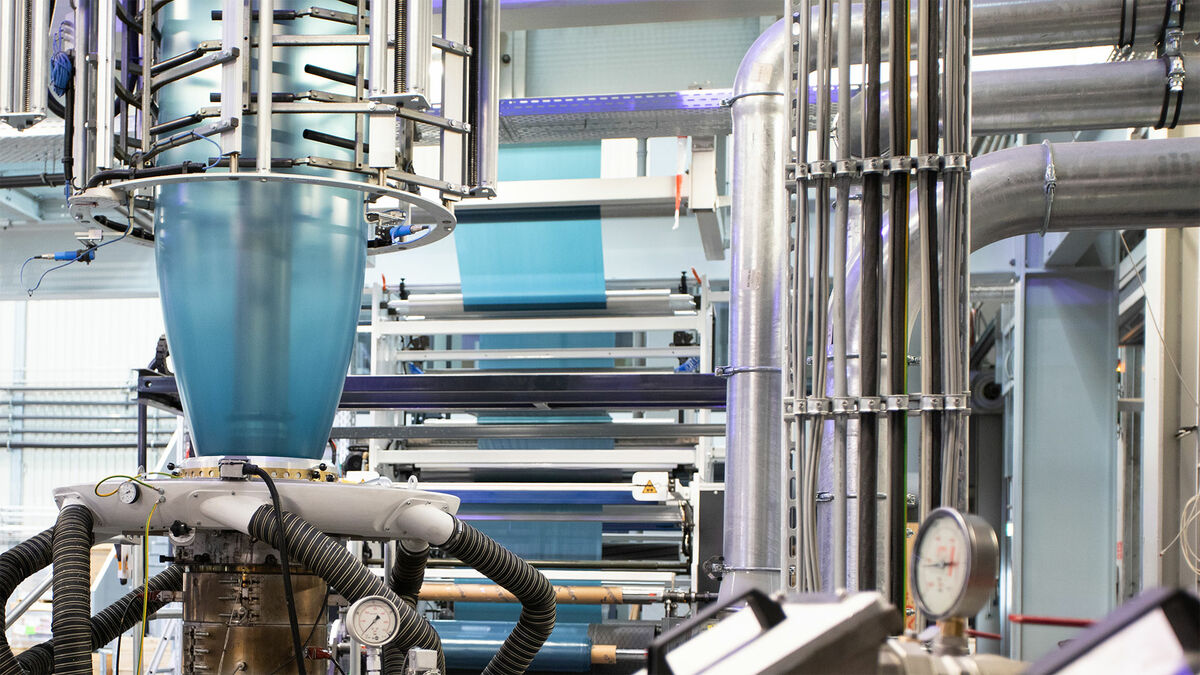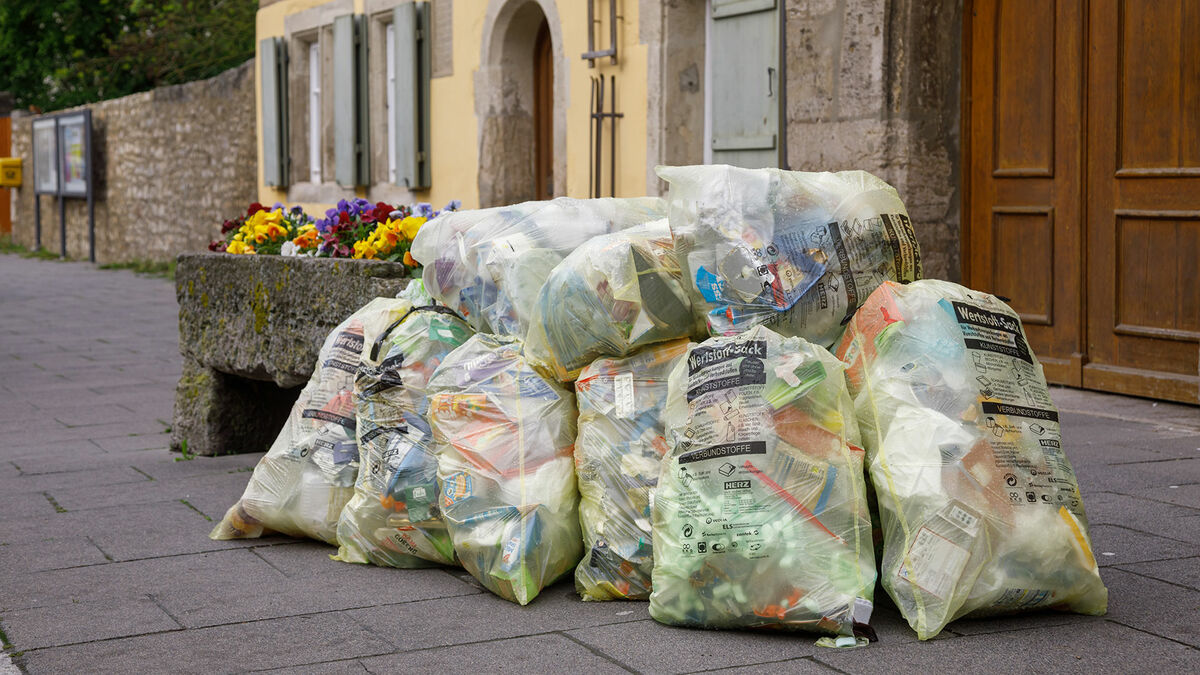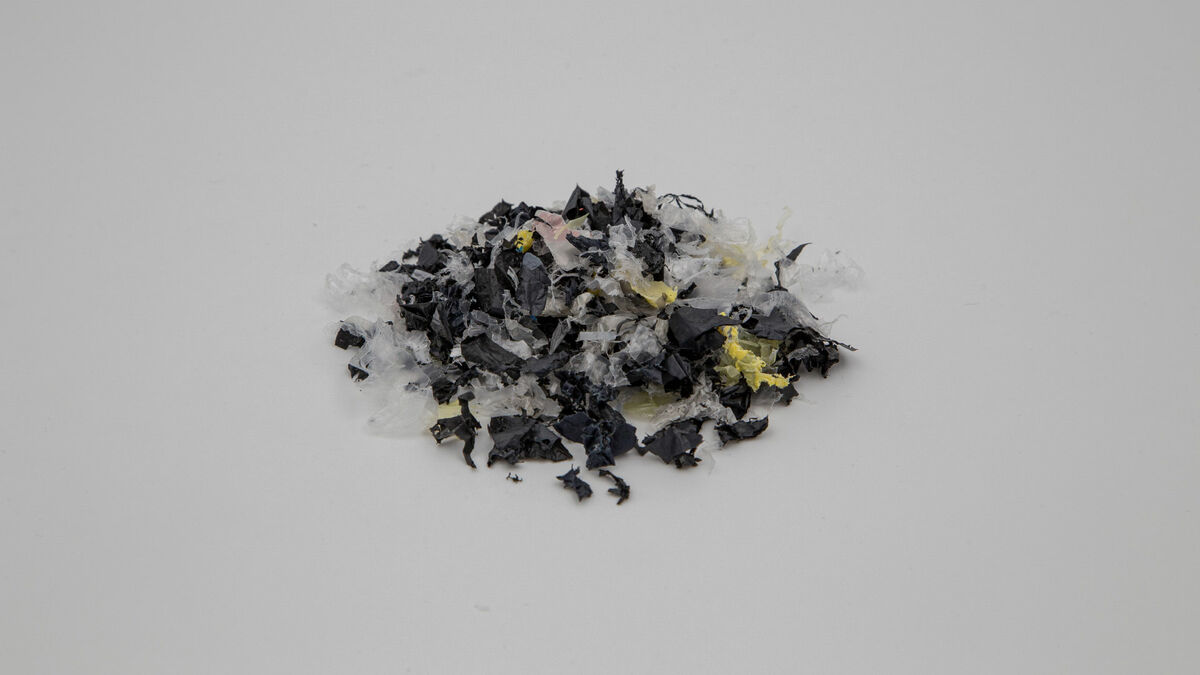
Expert interview: Increasing the recycled content of plastic films
Christoph, recycled content in films is more in demand than ever. Why is the processing of recyclate still often considered unprofitable?
Customers very often tell us that they have great difficulty in obtaining consistent recyclate quality. The first batch is good, after that it fluctuates and they have to react in production, for example adding more virgin material or even expensive additives to make the process stable at all. Maintenance and cleaning intervals are also shorter when processing recyclate.
The quality of recyclates is out of your hands, but what answers does Reifenhäuser as a machine manufacturer have to these challenges?
We in the Reifenhäuser Group have a wide range of technology and service offerings to help - we make customers 'ready for recycling', so to speak. With our EVO Fusion twin-screw blown film line, for example, we make producers more independent of the input quality of the recyclate they process.

In what way? How do producers benefit from the twin screw during recyclate processing?
When you want to recycle film waste from the production chain - from extrusion to printing, laminating, etc. to finished packaging - it is usually dirty or printed, there are adhesive residues. All these residues are contained in the recyclate and interfere when you want to further process the recyclate into a film. With our twin-screw technology, we achieve a better mixing effect of the raw material - both in terms of splitting and distribution. This is because the melted plastic is not a homogeneous mass but, especially in the case of recyclates, a mishmash of very different hydrocarbon chains. We can also degas the system very easily and effectively. And that's the exciting thing: We can remove the components in the recyclate that interfere with the process via degassing.
Does this still work with heavily contaminated and mixed film waste from the post-consumer sector, which we are often still unable to recycle today?
We have already proven that it works in trials with the Dual System. Our trial partners provided us with granules from a PE fraction that contained post-consumer waste from various sources - for example, beverage six-packs or compression bags for diapers and so on - in other words, all the PE film that we throw into the yellow bag. Such a mixed fraction cannot be processed at all on an extruder with a mono-screw, or can only be added to the virgin material in very small quantities; proportions of up to 20 percent are possible, and a maximum of 15 percent in relation to the entire film. Using twin-screw technology, we have produced a 3-layer blown film with about 70 percent recycled content from the mixed fraction - virgin material on the outside, recycled material on the inside. No one has ever achieved this to this extent before, and it represents a major step forward in recycling.

Extend cleaning intervals
Even high-quality recyclates contaminate the die, cooling ring and other line components faster than virgin material. With special solutions from Reifenhäuser, blown film lines remain operational longer.
Sounds like the twin screw solves many challenges at once. Do processors necessarily have to invest in this technology if they want to process recyclate?
Even high-quality recyclates contaminate the die, cooling ring and other line components faster than virgin material. With special solutions from Reifenhäuser, blown film lines remain operational longer.
But the more unpredictable the quality of the recyclate, the more suitable the twin screw is. With the Evo Fusion blown film line, for example, we can also directly process fluff, i.e. film snippets. Together with the customer, we find out which solution is appropriate in his case.
What does "direct" mean? Up to now, the recycling material is first melted and then granulated. However, this consumes a lot of energy and the quality of the raw material decreases. Will processors be able to dispense with this step in the future?
Yes, if a customer has large quantities of film scraps in their own production, they can use them again directly in production as recycled material. These scraps can also be printed or laminated trimmings. The energy-intensive step of re-granulation is no longer necessary.
Fluff-to-Film
With the Fluff-to-Film process, new film can be made from film waste in one step - without granulation and pre-drying. The key to success here is the high degassing performance and mixing of the EVO Fusion twin screw technology.
To be fair, however, it has to be said that most processors buy their recyclate as granules because the bulk density is so low with film shreds (fluff), as a lot of air would literally be driven through here. But as I said, for all processors who generate their own production waste, direct extrusion is a very economical method of using recyclate.

Can you name customers who are already using this advantage in practice?
Our customer Polifilm, which has protective films in its portfolio as well as extrusion films, can finally recycle its own film waste better and return it to the cycle thanks to Evo Fusion. Previously, additives and impurities made recycling difficult. With our twin-screw technology, he can now directly produce new film again from the residues.
With another customer, we conducted trials to compare the film quality achieved when processing film shreds and processing granules. We were able to produce shrink film from both recyclates, for example for beverage six-packs. Both films were fully functional, but the one made from granules subjectively looked slightly better.
Why is that?
This is due to the fact that granules are degassed and processed once more. This is energy- and cost-intensive, but on the other hand results in a 'more beautiful' film. In the end, the question is always: What is good enough for the respective application and what demands do we have in terms of appearance?
Applications
Film produced on EVO Fusion can be used in applications such as garbage bags, construction and industrial packaging. Learn more about applications for EVO Fusion
Is the sustainability debate changing what we expect from films?
You can tell that recycled film has been recycled. For a long time, that was not acceptable in the market. There is definitely a change in thinking here, both among our customers and - and this is even more decisive - among brand owners. There is now a basic understanding that recycled film does not look as perfect as new film.
In fact, the typical recycled look is often desired today because end customers should see that the film is made from recycled material. This is a good development for the whole topic of recycling, which is also driven by the consumer. Because if the focus is no longer on appearance but above all on function, new fields of application will open up in the medium term for films with a high recycled content beyond trash bags, the construction industry and industrial packaging.